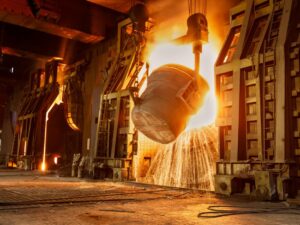Ways to decarbonise heavy industry
Heavy industry in the world’s most advanced economies can become carbon neutral – if governments implement the right policies in the next five years.
Chemical,steel, cement and other heavy industries are critical to everyday things we rely on, like vehicles, buildings and surgical supplies, the IEA explains. But producing these materials involves vast amounts of energy and heat.
This means it’s harder for heavy industry to reach ‘net zero’ – carbon neutrality – with steel and cement producers facing particular challenges.
What to do
Set a clear direction
Ambitious plans with clear targets should be developed for industry sectors by no later than the mid-2020s, backed by clear policies that promote innovative technologies and the efficient use of materials.
 Show industry what works
Show industry what works
Demonstration projects in different regions would show how industries can operate with near-zero CO2 emissions. Governments should be deciding in the next one to two years how to finance these and reduce any risk. At least two or three methods should demonstrate ways to produce both steel and cement with near-zero emissions, the IEA suggests.
Finance innovation in heavy industry
Grants, low interest loans and other types of finance could help fund the roll-out of near-zero emission technologies. Funding would help new and existing industrial plants and related areas like transport and storage.
Boost demand for near-zero technologies
Governments can help boost demand for materials made with near-zero emissions. This might include long-term support for first mover commercial plants in different technologies. Public sector procurement contracts that span a number of years are an example of government support.
Work together
An international industry decarbonisation alliance could include agreeing “concrete commitments” with the main aim to accelerate industry’s transition to net zero.
Adjust measurement tools
Carbon emissions from industry differ across plants, sectors and countries. For this reason, thresholds that are used to measure near-zero emissions from industry should be developed and extended as needed. This would take account of “sector-specific nuances.”
Recognise existing efforts to cut emissions
These near-zero thresholds should be measured separately from existing work already underway to substantially cut emissions from steel and cement. Some of this existing work will provide stepping stones or temporary solutions to net zero. Recognising and measuring this existing work as “low emission production,” keeps it distinct from industrial production with near-zero emissions.
Agree on definitions and extend to other industries
More work is needed to define near-zero emissions. This includes how production – the making of materials – relates to products (finished goods) and projects (a collection of activities) with near-zero emissions. Near-zero emissions work applied to other materials, including ammonia, methanol and aluminium has benefits.



